
New Factsheet: Scale Insects on Blueberry
As the blueberry summer season ends, most pruning has been conducted, and fall and winter preparations are underway; there …



El inglés es el idioma de control de esta página. En la medida en que haya algún conflicto entre la traducción al inglés y la traducción, el inglés prevalece.
Al hacer clic en el enlace de traducción se activa un servicio de traducción gratuito para convertir la página al español. Al igual que con cualquier traducción por Internet, la conversión no es sensible al contexto y puede que no traduzca el texto en su significado original. NC State Extension no garantiza la exactitud del texto traducido. Por favor, tenga en cuenta que algunas aplicaciones y/o servicios pueden no funcionar como se espera cuando se traducen.
Inglês é o idioma de controle desta página. Na medida que haja algum conflito entre o texto original em Inglês e a tradução, o Inglês prevalece.
Ao clicar no link de tradução, um serviço gratuito de tradução será ativado para converter a página para o Português. Como em qualquer tradução pela internet, a conversão não é sensivel ao contexto e pode não ocorrer a tradução para o significado orginal. O serviço de Extensão da Carolina do Norte (NC State Extension) não garante a exatidão do texto traduzido. Por favor, observe que algumas funções ou serviços podem não funcionar como esperado após a tradução.
English is the controlling language of this page. To the extent there is any conflict between the English text and the translation, English controls.
Clicking on the translation link activates a free translation service to convert the page to Spanish. As with any Internet translation, the conversion is not context-sensitive and may not translate the text to its original meaning. NC State Extension does not guarantee the accuracy of the translated text. Please note that some applications and/or services may not function as expected when translated.
Collapse ▲
As the blueberry summer season ends, most pruning has been conducted, and fall and winter preparations are underway; there …
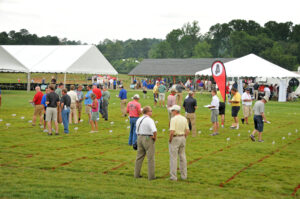
Turfgrass Field Day attendees at the Lake Wheeler Turfgrass Research facility. Join us Wednesday, August 13th for the in-person, 2025 …
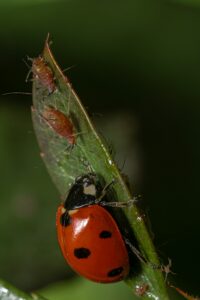
Safe Ways to Manage Pests and Diseases in the Summer Therapeutic Horticulture Garden Therapeutic horticulture gardens offer a space for …
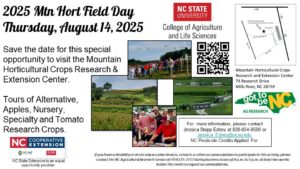
DATE: Thursday, August 14 · 8 a.m. – 2 p.m. EDT LOCATION: Mills River, NC Registration is now open for Mtn. Hort Field …
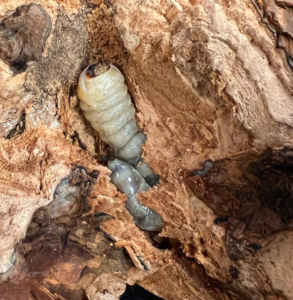
This week, Prionus adults emerged from the soil near the blueberry plants in Pender and Sampson Counties. This is …
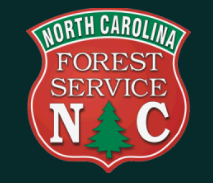
N.C. Forest Service and NCSU Forestry celebrate NC Arbor Day “Planting trees is important because they clean the air we …
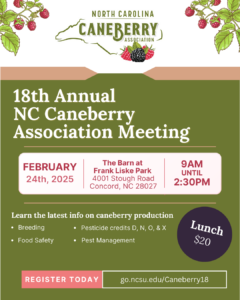
18th Annual NC Caneberry Association Meeting FEBRUARY 24th, 2025 The Barn at Frank Liske Park 4001 Stough Road Concord, NC 28027 9 a.m. UNTIL 2:30 …

NC State’s Department of Horticultural Science extends our heartfelt gratitude to Frederick S. Baggett from Kingsport, Tennessee, for his …
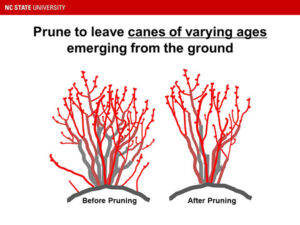
Blueberries are a popular crop for commercial farmers as well as home gardeners in North Carolina. They are fairly …

Saturday, Feb. 22 from 8:30 a.m. to 4 p.m, will now take place at Blue Ridge Community College in …
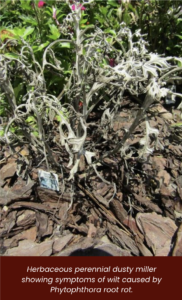
Unfortunately many of our ornamental plants, such as trees, shrubs and bedding plants are susceptible to the Phytopthora genus …

There are pesticide applicator recertification training classes coming up in February. “V” Credit class (2 CEU credits) is Tuesday, 2/25/2025 …

Written byJeffrey H. Dorfman, Hugh C. Kiger Distinguished Professor Department of Agricultural and Resource Economics, NC State University In this issue of …
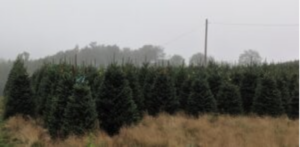
Tuesday, February 11, 2025 8:30 a.m. – 3 p.m. Haywood County Center 589 Raccoon Road, Waynesville, NC Come learn about grafting, shearing, ground …
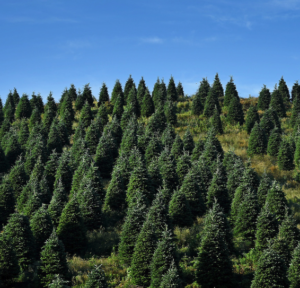
Written by Dr. Jill Sidebottom (Retired) Extension Specialist (Mountain Conifer IPM), updated by Minda Daughtry Information on Tree Care Tree Care Tips When Was …

Fall Pro Day Thursday, December 5 · 8 a.m. – 3 p.m. EST N.C. Cooperative Extension, Haywood County Center …
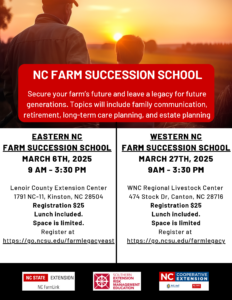
Farmers and farm families across North Carolina are invited to take part in the NC Farm Succession School, a …
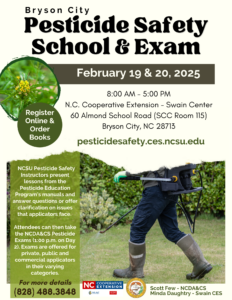
Do you need to get your Pesticide Applicator’s License? A pesticide license is required for commercial applicators applying any type …
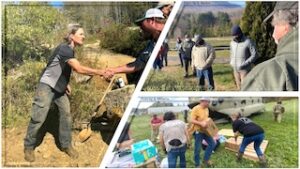
NC State Extension Forestry, in partnership with state and federal agencies supporting the recovery efforts, will host a webinar …

Stormwater Design Workshops Registration is NOW OPEN for the Following Design Workshops: ~ Regenerative Stormwater Conveyance (RSC) ~ ~ 2 NEW Minimum Design …

This field guide and linked resources provide information on basic insect identification, sampling methods, monitoring, …
Vineyard establishment involves careful planning, thorough site preparation, vineyard design, planting, and trellis construction. Unlike …
Growing Chardonnay grapes, the number one vinifera variety grown in North Carolina, can be a …

Crape Myrtle Bark Scale (CMBS), Acanthococcus lagerstroemiae, is an exotic insect pest that feeds only …
New and current grape growers will find practical information on site appraisal, establishment, and operation …
Grapes grown in North Carolina are sometimes exposed to unfavorable climatic conditions and biological pests …

This factsheet discusses symptoms and control of several leaf diseases common in North Carolina blueberry …

This factsheet describes the biology of the cane lace bug or bamboo lace bug, Leptodictya …